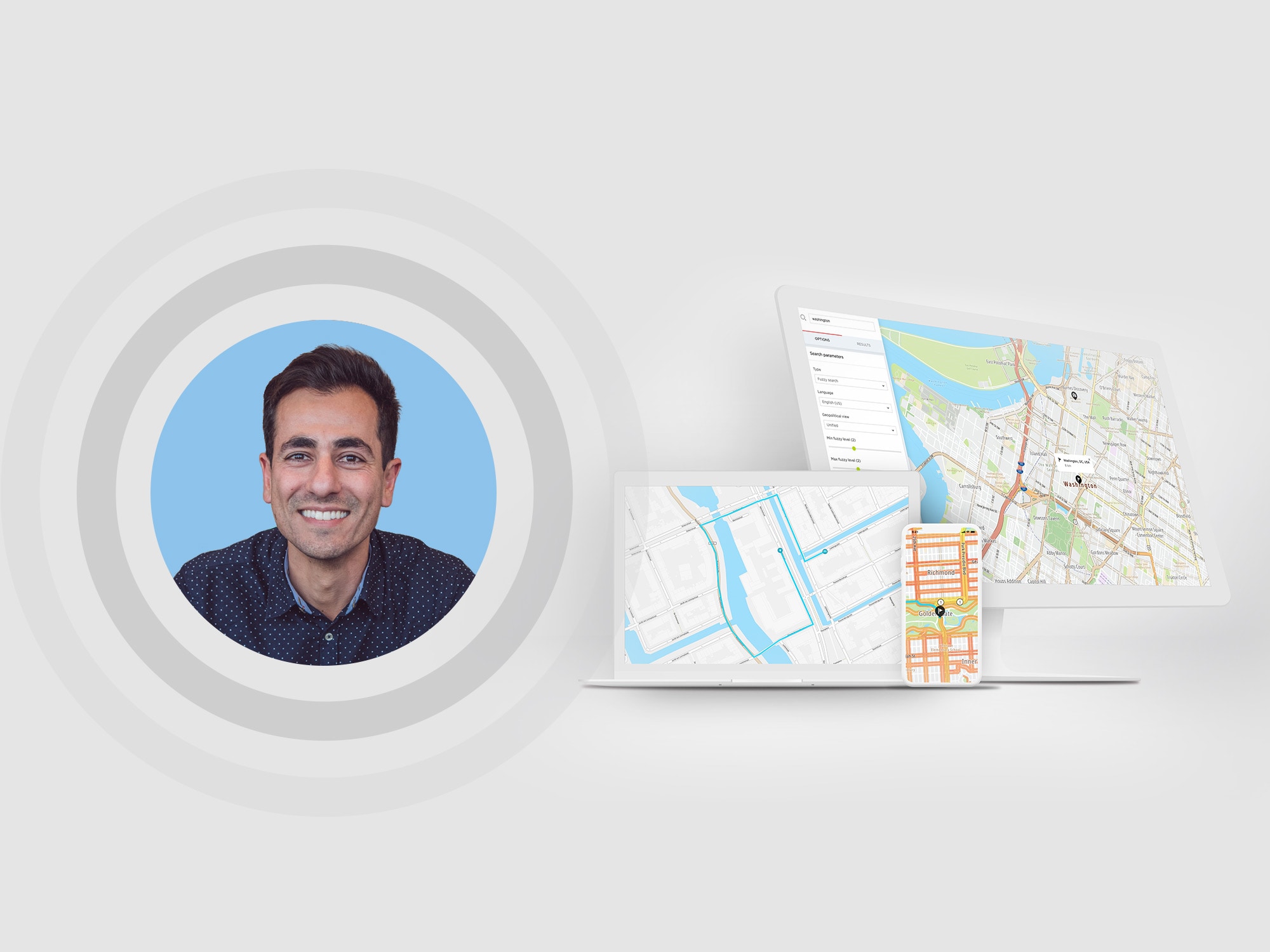TomTom Mapmakers: Meet Jonathan Americo, Product Marketing Manager
) Ruanna Owens
Ruanna Owens
For the sixth article in the TomTom Mapmakers series, we spoke with Jonathan Americo, Senior Product Marketing Manager and Traffic specialist! Learn more about Jonathan’s 12+ years of mapmaking experience, the importance of traffic data, and where the location tech industry is headed.
OUR MAPMAKERS SERIES
TomTom started with a simple idea: Make digital navigation accessible for everyone. Our people are what make this vision possible. We are excited to celebrate and showcase the amazing individuals who make the location technology that help people every day. In our TomTom Mapmakers series, we publish an interview once a month with some of our product experts, designers, and developers to learn more about their journeys, roles, and hear their insights on the future of location tech.
This month we spoke with Jonathan Americo, Senior Product Marketing Manager specializing in Traffic and Maps products, currently located in Amsterdam. Keep reading to learn more about Jonathan’s experience working in maps from Sao Paulo to Amsterdam, and his thoughts on the importance of traffic data and where the location technology industry is headed.
MEET JONATHAN
What do you do at TomTom?I’m a senior product marketing manager for the Enterprise Business Unit at TomTom. On our team, we all try to combine expertise on products, customers and markets but, naturally, all of us start to become experts in some topics. In my case, I focus on managing our traffic-related products, as well as bringing balance to the whole portfolio. On the market side, I specialized on our Traffic Management industry.
Tell me about your career path.I have a bachelor’s degree in Geography and then I got my master’s degree in GIS. So, since the university times, I’ve been crazy about maps and traveling (I guess one “tests” the other). With the rise of the internet and the mobile phones being connected everywhere, maps and location technology in general, took a center role on everything we do, which was great for my career. Before and during college I had different types of jobs, but one that was always present was English Teacher, which was great to bring me some money to enjoy parties and travels with friends.
My first job in the location industry was by HERE Technologies, back in 2009 when it was still called NAVTEQ. I started as a geography analyst and the main task was to be inside the car, with the GPS antenna, computers, and a bunch of other equipment, driving and creating the map itself. From there I went to being a product analyst and then a product manager, which has been the most common role throughout my career. Since the beginning, I’ve always been working with tech products.
Within TomTom, I first joined as a product manager for the Maps product unit in the Sao Paulo office in Brazil, managing maps creation for Latin America. After a year of working in this position, I got the chance to move to Amsterdam to join the traffic & travel information product unit, also as a product manager, managing different products, such as TomTom MOVE and Intermediate Traffic. Now, in my most recent role, I’ve been working with the Enterprise business unit as a product marketing manager for some of our Traffic products, as well as the Traffic Management industry.
Wow, that’s a lot of experience with maps! That’s interesting, going from starting out as an English teacher to being in location tech.Yes, I think that role helped me a lot for my later roles. When you present something, it’s essentially a teacher’s job, right – you have to talk about things, be clear, etc. I valued that part of my career journey a lot also because it helped me – when you are teaching something you get better at that thing that you’re teaching so it helped me with English as well.
What do you think would be the most fun country to map?Again, connecting maps and travel, my current top three destinations are all in Africa. From a mapping perspective is also very interesting, seeing the rise of community of mapmakers. If I had to name one, I’d say Rwanda.
 What is your favorite part of your role?
What is your favorite part of your role?Nowadays, my favorite part of my current role is the strategic thinking behind a product launch, a go-to-market plan or trying to get a new customer. Everything that involves strategic thinking to achieve a certain goal, which most of the times is related to why customers should use our products.
What is a challenging aspect of your role?Working in a full B2B company, I’d say that the toughest part is trying to read our customers and the market. Compared to a B2C environment, where there’s a direct interface (e.g.: a website, an app, a physical store, etc.) with the customers, in a B2B scenario everything becomes a bit harder and complex when you want to run experiments, A-B testing, get feedback and have access to customer behavioral data.
Are there any interesting trends around location technology, traffic, fleets & logistics, or on-demand that you find interesting?I love the fact that big corporations are getting involved with mapmaking, one way or the other. Nobody wants to be dependent on only one location technology provider, therefore they need to combine multiple sources, create hybrid solutions, and contribute somehow to the overall map ecosystem. A company today might be using APIs from TomTom for some specific services, other open-source APIs for other tasks and map data in the backend as the foundation of the whole solution. Particularly what’s been happening around OpenStreetMap and the big corporations has caught my attention a lot.
Why is traffic data so important, and what do you think the future of traffic and/or traffic data will look like?Traffic data shows how everything is connected. Before the internet being available on mobile phones, traffic data looked completely different. Few cars were connected and sending real-time traffic information to the user was very limited (being done over FM radio) – everything looked really different – but that was the beginning. The mobile connection brought a massive amount of GPS location data, enabled sending real-time information extremely fast and brought extra quality and precision to all this big data.
That’s why traffic data is so important: it’s not only representing the real condition on the road, but it’s also showing us the power of a connected community and power of this community to solve problems.
When it comes to the future of traffic data, I believe now, with the availability of not only GPS data but also car sensor data, we’re moving towards more content and more precision. That is, we will not only know the speed on the road, but also speeds per lane, cars breaking down on a specific spot due to an accident, windshields being activated due to rain showers on the road and the traffic jams that is causing. So I’d say the future of traffic data is lane-level and with more context data.
What do you wish people knew about our industry?That it is embedded everywhere. It’s not only about maps, but the location technology behind almost everything. From dating apps to order your food; searching the internet the results are related to your location. I guess, in a way, everybody is realizing that more and more.
Anything else you’d like to add?TomTom’s company culture is one of the best I’ve seen so far, and I believe it’s highly because of its international culture. Living with different backgrounds and perspectives contributes a lot to our day-to-day learning and also makes us open to new things.

NEXT STEPS
To learn more about Jonathan, you can find him on LinkedIn and Instagram.
To learn more about our traffic products, check out these links:
Here are some tutorials to help you make the most of our Traffic API:
- How To Add Traffic APIs to Your Location-Based App
- Build a Traffic Alert Dashboard with the TomTom Traffic API
- Using Traffic Data with Maps and Routes
- Understanding How TomTom Handles Data Used by the Traffic API
Lastly, want to read more from our Mapmaker series? Check out these articles:
- Meet Leen D'hondt, Product Manager, TomTom Maps
- Meet Jose Jose Rojas, Developer Advocate
- Meet Maarten Clements, Search API Product Manager
- Dominika Spolnik, Product Manager, Map Display & Traffic APIs
- Meet Kasia Kaczmarek, Product Manager, Maps SDK
Remember, you can always reach out to us in our Developer Forum for any questions you may have.
Happy mapping!